
|
Deaths Scenes 2002 |
| Film Title/Year and Description | ||||||||
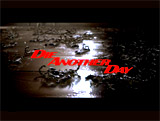
|
In this 20th James Bond film (the fourth with Pierce Brosnan as Agent 007), there were two spectacular death scenes. In the first, the main villain's burly bodyguard, Mr. Kil (Lawrence Makoare) was torturing NSA agent Jinx (Halle Berry) with electric shocks on a table with robotic multiple laser arms. Bond saved Jinx's life by turning off the laser gun, but found himself in a life-death struggle against Mr. Kil amidst multiple laser beams wildly projected around the torture room. Their fight ended with Kil's death - when Bond was about to be stabbed, Jinx got ahold of the control device for the lasers, turned them back on and projected one beam to drill a hole through the back of Kil's skull and emerge through his open mouth. After being freed, Jinx lasered off Kil's hand so that they could use it to exit the dome via the biometric hand scanner. In the second sequence, Bond was in a vicious fight against mad world-dominating villain Gustav Graves (Toby Stephens) onboard his massive cargo plane. As Graves prepared to exit the fiery plane with the last remaining parachute, he taunted Bond:
Bond pulled Graves' rip-cord, and the villain was sucked out of the side of the plane through a gaping hole. As Graves clutched the side and was hanging on for dear life, Bond quipped: "Time to face gravity." Bond jolted him with a blast of voltage, causing him to let go and propelling him into the plane's jet engine. |
 Death of Mr. Kil  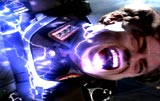  Death of Bond Villain Gustav Graves |
||||||
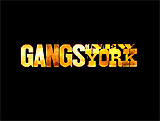
|
Gangs of New York (2002) Martin Scorsese's historical epic drama told about the mid 19th century territorial conflicts in Lower Manhattan's Five Points district of New York between crime boss-supported gangs (of "nativists") and groups of recently-arrived Irish-Catholic immigrants. Violent, racist white Protestant "Native" gang leader Bill "The Butcher" Cutting (Daniel Day-Lewis) was mortally wounded (by shrapnel) during a massive gang war in Paradise Square that was coincidentally interrupted by a simultaneous Civil War-related event - the Union Army's cannon shelling of New York during the draft riots of 1863. As the underworld leader looked around at the apocalyptic carnage, mostly from the shelling, he smiled and sighed in a relieved tone to his vengeance-seeking combatant.
He had been fighting ex-surrogate son Amsterdam Vallon (Leonardo DiCaprio), the son of the dead Irish immigrant leader named Priest Vallon (Liam Neeson), head of the "Dead Rabbits." He allowed the blood-soaked Amsterdam, with a subtle nod of his head, to fatally stab him with his knife, and then keeled over while gripping Amsterdam's hand. In a close-up, his eyelid was shown closing over his glass eye that was imprinted with an American eagle. Cutting's body was buried in a Brooklyn cemetery next to the grave of Priest Vallon, within view across the river of the skyline of Manhattan. |
 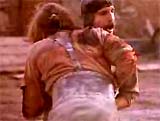  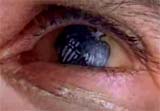
Fatal Stabbing of "The Butcher" |
||||||
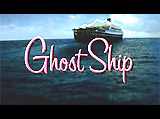
|
Ghost Ship (2002) Director Steve Beck's horror film had the clever tagline: "Sea Evil." The scary opening massacre sequence was set (in the early 1960s) on-board an Italian luxury ocean liner named the Antonia Graza. A fancy, on-deck dance party was being held with songstress Francesca (Francesca Rettondini) in a fancy strapless red dress entertaining the wealthy guest passengers by singing "Senza Fine." Slightly away from the party, a mysterious gloved hand pulled a lever that unraveled a very thin cable wire. After the wire tightened, it sliced across the deck - bisecting everything in its path: flowers, people, tables, heads, and bodies. The taut thin steel wire vibrated, covered in blood. For a few seconds, stunned individuals stood frozen - they did not realize that they had been cut in half until their bodies tumbled in bloody pieces to the ground.
The Captain's (Bob Ruggiero) face was sliced through his mouth, and his head toppled forward off his neck stump, as he protectively sheltered a young girl named Katie Harwood (Emily Browning) beneath him. |
    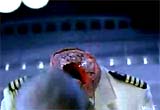
|
||||||

|
Irreversible (2002, Fr.) Gaspar Noe's controversial French film, told in reverse chronological order, was disturbing to many audiences, for its frank sex scene, an unbroken anal rape sequence, and for its unflinching violence. Deep within a gay S&M club named The Rectum, a scene of death was filmed with a hand-held camera. It was a raw, violent, and animalistic revenge-murder, in retribution for a 9-minute long rape and brutal beating of Marcus' (Vincent Cassel) beautiful girlfriend Alexandra (or "Alex") (Monica Bellucci). Pierre (Albert Dupontel) rescued his friend Marcus from assault (although his arm was broken) by a suspected rapist known as Le Tenia ("The Tapeworm") (Jo Prestia). The suspect's head was repeatedly smashed with dull, crunching blows from a fire extinguisher until it became a bloody pulp and the individual expired. However, it appeared that the rapist witnessed the beating, while an innocent man was the grisly victim of the bludgeoning assault. |
   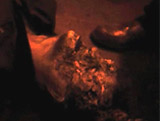 Crunching Blows From Fire Extinguisher |
||||||
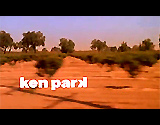
|
Ken Park (2002) Director Larry Clark's controversial non-linear drama opened with the suicidal death of red-haired, freckled teen skateboarder Ken Park (Adam Chubbuck) in a Visalia, California park, when he pulled out a gun from his pack and blew his brains out. (The motivation for killing himself was revealed later - he had gotten his girlfriend pregnant.) Later, a controversially-graphic scene of auto-erotic self-asphyxiation was one of the film's more shocking scenes. Death-obsessed, masturbation-addicted, sociopathic, parent-less teenager Tate (James Ransone) had wished to increase his sexual arousal. He wore a T-shirt saying "Keep it Simple" as he choked himself with a long green dressing gown belt tied to a doorknob while he pleasured himself (to a money-shot climax) watching Anna Kournikova play tennis. Earlier in the film, he had killed his doting, smothering grandparents that he was living with, explaining:
|
 Ken Park Suicide    Tate's Auto-Erotic Self-Asphyxiation |
||||||
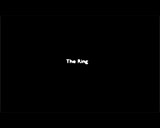
|
The Ring (2002) Director Gore Verbinski's psychological horror film was a remake of the original, highly-effective Japanese film, Ringu (1998, Jp.) by Hideo Nakata. One of the filmdom's scariest and most chilling death scenes was set in the apartment of Noah Clay (Martin Henderson), the ex-boyfriend of investigative reporter/journalist Rachel Keller (Naomi Watts). The TV turned on by itself behind him. He approached with apprehension, and knelt in front of the screen. The television projected an image of a well in the woods. He watched in horror as long, black-haired, decaying Samara (Daveigh Chase) emerged out of the watery well grave in the woods and walked toward the screen. Rachel frantically was calling Noah at the same time (and racing to him in her car), but he was transfixed by the image and didn't answer.
Noah jumped back as Samara literally crawled directly out of the TV set, leaving wet marks on the floor. He fell backwards, cascading a large multi-shelved bookcase onto the floor, and spraying broken glass. He struggled to crawl away, on top of the shards of sharp glass. When she looked up and confronted him with her lethal stare, he died of fright - thus fulfilling the 7-day curse of the videotape. Rachel found him dead in a chair in his studio-apartment - and shrieked at the sight (off-screen).
|
    Noah Viewing Videotape |
||||||
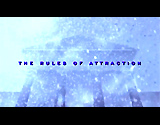
|
The Rules of Attraction (2002) Director/writer Roger Avary's mean-spirited, crude, and depressing love-triangle romantic (black) comedy was about a group of late-1980s liberal arts students (mostly spoiled, over-privileged, shallow, miserable bohemian nihilists, who were hedonistic and promiscuous), at Camden College (fictional) on the East Coast (New Hampshire). The three main characters were:
However, in one tragic, intensely-dramatic scene, an un-named heartbroken, pig-tailed female college student, known as "Food Service Girl" (Theresa Wayman) committed suicide by slashing her wrists in a dormitory bathtub of warm water. She had been writing secret love letters (on purple stationary) to Sean, and spying him from afar for some time, although he thought the letters were from Lauren. She was upset that Sean had left a "Dress to Get Screwed" party with dumb-blonde, sexpot party girl Lara Holleran (Jessica Biel), Lauren's back-stabbing, cocaine-addicted roommate. As she prepared to kill herself, In voice-over, she read her final suicide letter to Sean:
Then, in gigantic closeups, she turned the bathtub faucet to 'H" (hot), lit candles, placed three rings on the side of the tub, along with a razor blade. She removed her clothing, reclined back, and proceeded to slit the veins in her arms under the water. While she was bleeding to death, Harry Nilsson's plaintiff and overwrought song "Without You" played, with an ironic tone, on the soundtrack. To express her pain, loss of consciousness and delirium, the camera rotated or tilted slightly, and the music became skewed or distorted, before she peacefully ended her life.
Later, her body was discovered by Lauren in the dorm bathroom, who pulled her corpse from the bloody water. |
  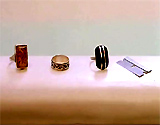   Preparing For a Suicide in a Bathtub |
||||||
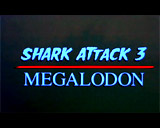
|
Shark Attack 3: Megalodon (2002) Director David Worth's cheaply-made, notoriously-bad action horror film, a Jaws rip-off film, was about a colossal, menacing shark - supposedly the prehistoric extinct ancestor to the Great White shark. Its tagline was: "The Terror Has Surfaced." There were a series of unbelievably funny death scenes, in which a regular-sized shark was blown up to gigantic proportions (to create an angry Mother shark), and then victims falling into its jaws were superimposed onto it:
|
 Leaping Into Jaws 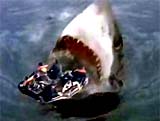 Life-Raft 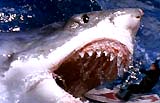
Jet-Ski |
||||||
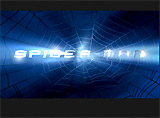
|
Director Sam Raimi's big-budget, live-action super-hero film was derived from the Stan Lee comic book story of the same name. There was a final one-on-one match up in an abandoned, crumbling building between:
The schizophrenic, megalomaniacal Jekyll-Hyde villain was unmasked as weapons-manufacturing scientist Norman Virgil Osborn after he realized that he had enraged the superhero by threatening to kill the love of his life Mary Jane (Kirsten Dunst), and that he was doomed to lose. Acting benevolently, he attempted to convince Spider-Man of his fatherly intentions and begged for forgiveness, claiming that he wasn't responsible for the deaths that the Green Goblin had caused:
All the while as he spoke, however, the double-crossing Green Goblin was programming his Goblin Glider to strike the back of Spider-Man with its razor-sharp blades or spikes. As the glider was poised to strike, he said:
However, with quick reflexes, Spider-Man backward-somersaulted out of the way, and the Glider struck and impaled the Green Goblin through his mid-section against a brick wall. The Green Goblin's final words as he collapsed dead were to not reveal his identity to his son Harry (James Franco): "Don't tell Harry." |
 Green Goblin (Willem Dafoe) 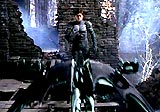   Impaled by Goblin Glider |
||||||
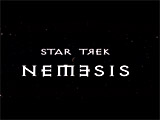
|
The tenth film in the lucrative, lengthy series-franchise was also the last film featuring the entire original Next Generation crew of the USS Enterprise. The film's plot told of an uprising led by Romulan political leader, Shinzon, with sinister plans to conquer the Federation and destroy Earth. During the film's exciting conclusion, there was a fierce battle between:
Shinzon was dying of genetic degeneration and could only be restored with a complete blood transfusion from Picard ("the only donor with compatible DNA"). The two met face to face during a deadly countdown to thalaron radiation deployment - Shinzon's weapon. Picard learned that he had a surprising relationship to Shinzon - Shinzon had been created from Picard's DNA. The cloned leader died when impaled by a spear-shaped piece of metal piping - he pulled himself along the length of the spear lodged in his torso until he was inches from Picard's face. He then grabbed Picard's neck and spoke his final words before collapsing onto Picard's chest:
|
    Shinzon Speared |
||||||
(chronological by film title) Intro | 1915-1929 | 1930-1933 | 1934-1938 | 1939 | 1940-1942 | 1943-1945 | 1946-1947 | 1948-1949 1950-1952 | 1953-1955 | 1956-1957 | 1958-1959 1960-1961 | 1962-1963 | 1964-1966 | 1967-1968 | 1969-1970 1971 | 1972 | 1973 | 1974 | 1975 | 1976 | 1977-1978 | 1979 1980 | 1981 | 1982 | 1983 | 1984 | 1985 | 1986 | 1987 | 1987 | 1988 | 1989 1990 | 1991 | 1992 | 1993 | 1994 | 1994 | 1995 | 1995 | 1996 | 1997 | 1998 | 1998 | 1999 2000-2001 | 2002 | 2003 | 2004 | 2005 | 2006 | 2007 | 2008 | 2009 | 2010 | 2011 |